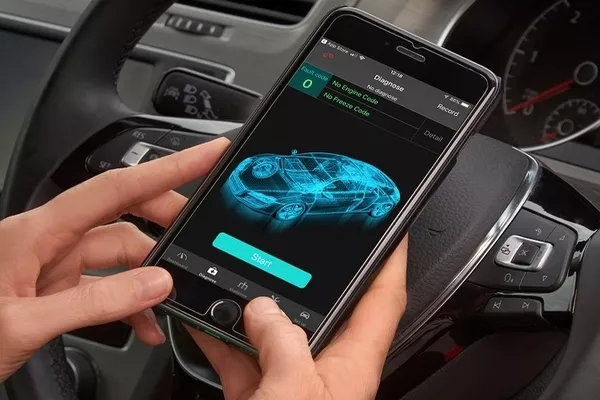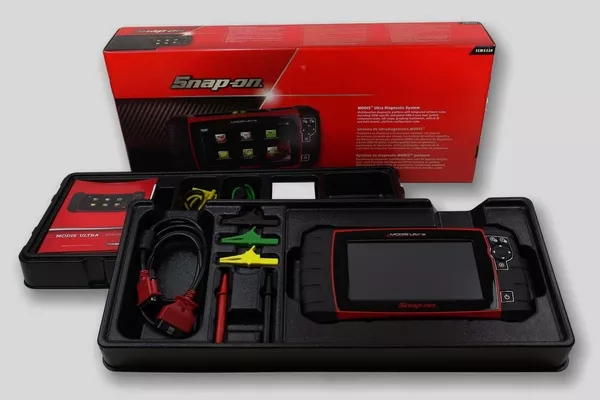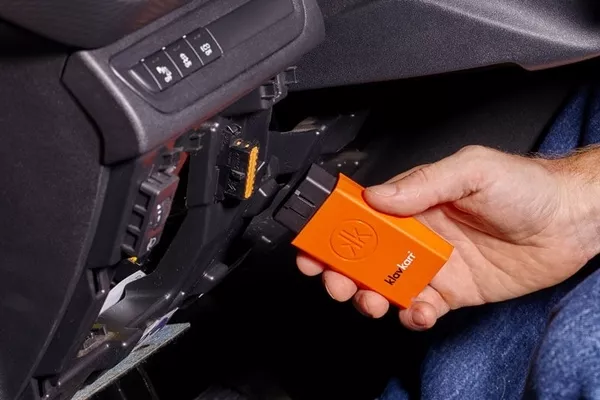With all the new advancements that make vehicles more advanced, it is only fitting that the corresponding maintenance and repair are also upgraded. One of the gadgets that are making every mechanic’s job easier today is the car diagnostic tool.
These tools were supposed to be compatible with one vehicle make. Even after the OBD-II (on-board diagnostics II) was already introduced to the public, these scanning tools continued their high price value.
1. Car code readers today
Thanks to innovation and mass production, these expensive tools aren’t only made cheaper. They’re also made better and more up-to-date. In fact, the right code-reading tool and accessory can even turn your smartphone to a scanning tool. Not only that, most of the information about reading car coders can already be found online.

The right code-reading tool and accessory can even turn your smartphone to a scanning tool
This means that you won’t have to go running to the mechanic every time your car has the check engine light on. But before getting excited, here are a few reminders about what a car diagnostic tool can do for you.
- A car diagnostic tool isn’t a magical device. You don’t just plug the tool in and then get an answer as to why your car is jerking.
- When the check engine light is on, and you plug in your code reader, do not expect the tool to tell you the problem. Because in most cases, it probably won’t tell you the defect is.
- A car diagnostic tool will only give you trouble codes. In some cases, it can give you more than one code. This is the starting point of the diagnostic process.
>>> Check out: Car code reader and everything you need to know about it.
2. What is this so-called "check engine light"?
The check engine light is the tiny icon that’s usually behind your steering wheel. It can have the words “check engine.” In most cases, it is just a small outline of a drawing of an engine. It is usually close to the gauges and meters.
When this little icon lights up, it usually means something is wrong. Now, there is no way to tell how bad the defect is until you check on it. This simply means that one of the sensors located in the engine detected something that shouldn’t be happening. This could also indicate that there is a possible defect in the sensor itself or the wiring.

When the check engine light icon lights up, it usually means something is wrong
There are also cases when the engine light has turned on and then off again. This can happen even though you never went to check on it. However, this doesn’t mean that the problem went away or solved itself on its own.
In fact, the problem is most likely still there and can get worse. One way to make sure of this is by using a code reader to get a copy of the trouble codes. Read on this article from Philkotse.com to know more about this car diagnostic tool.
3. How does one obtain a car diagnostic tool?
A long time ago, the only way to get a car diagnostic tool was by purchasing them from specialty tool companies. This made it hard for any average car owner to get one. That’s no longer the case for today’s vehicle owners.
Dependable but affordable car code readers are now made more available to those who want one for themselves. In fact, you can purchase your very own scanning tool from retailers, auto-parts stores, and even in online shops.

Dependable but affordable car code readers are now made more available to those who want one for themselves
If you don’t want to buy one just yet, you can also rent or borrow it. There are part stores in the Philippines where the use of car diagnostic tools is free. This is usually offered by part stores in the hopes that you’ll buy the necessary repair and replacement parts from them.
>>> Also check: How to choose OBD-2 Scanner in the Philippines & 10 recommended products.
4. The difference between the OBD-II and OBD-I
Before you rent, buy or borrow a car diagnostic tool, you first have to distinguish the difference an OBD-II and an OBD-I device. Those vehicles produced before 1996 belong to the OBD-I category.
These systems don’t possess a lot of characteristics in common between their different makes. That’s why it’s important to get yourself a car code reader specially designed for the model, make and year of the vehicle.

You first have to distinguish the difference between an OBD-II and an OBD-I device
The vehicles under the OBD-II category are those produced after 1996. This is a standardized system that makes the diagnostic process a whole lot easier. The vehicles under this category utilize a common diagnostic connector along with universal trouble codes.
Manufactures have an option to create codes specific for their vehicles but under one condition. Any vehicle produced after 1996 should have codes that can be read by the OBD-II.
>>> Relevant article: Why you should get an OBD-2 scanner for ECU-equipped cars?
5. Where should I plug my diagnostic tool?
Once you get your hands on a dependable car diagnostic tool and your check engine light is on, you can now put your tool to the test. To do that, you would first have to find the socket for your scanning tool.

You first have to find the socket for your scanning tool
OBD-I vehicles
If you have a vehicle manufactured before 1996, the diagnostic connector can be anywhere. You can try looking for it under your dashboard, near the fuse block, or even in the engine compartment. The connectors for the OBD-I can also be in a variety of sizes and shapes. But you can get an idea of what it looks like by looking at the plug-in your scanning tool.
OBD-II vehicles
If your vehicle belongs in the OBD-II category, the diagnostic connector should be under the dashboard. This should be at the left of your car’s steering column. The connectors will most likely be shaped like a rectangle or a trapezoid.
>>> You might want to know: 10 recommended software for OBD II scanner.
6. Retrieving the codes
Once you have the scanning tool plugged in, you should turn the ignition on to power on the device. The device may also prompt you to enter your vehicle’s VIN, engine type, or some other type of info.
It will do its job and provide you with codes. You should take note of the codes and do a little research using the internet. More advanced scanning tools, on the other hand, can give you what each code means right away.
Recent posts
- Early Warning Device for cars: Must-have safety tool for every Pinoy driver Aug 18, 2023
- Top 10 tools must have in car trunk for every drive Dec 20, 2022
- 5 essential car gadgets that every parents need for their vehicles Aug 09, 2022
- 10 reasons Filipino drivers aren’t safe with gadgets when driving Jul 07, 2018
- Essential tools needed in a car tool kit for DIY car maintenance Jun 18, 2018












